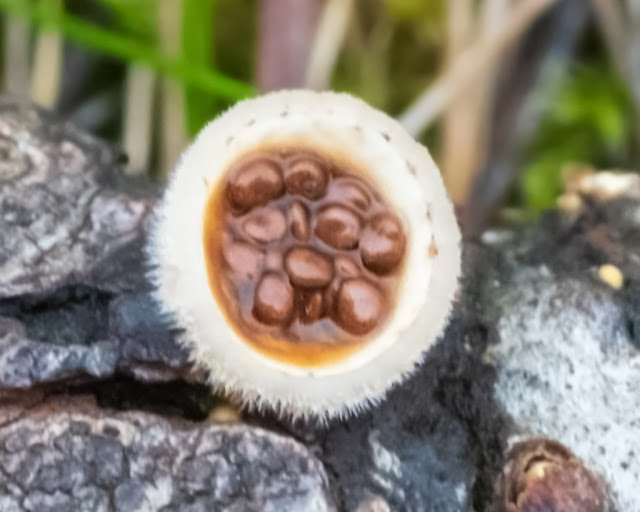Estimates vary. There are said to be up to 3.8 million species of fungi worldwide, of which about 148,000 have been described. Cutting it down to just the macrofungi, the mushrooms we see in the forest and our lawns, there are 14,000 known species, 3,000 of which grow on Vancouver Island. No wonder I keep seeing more!
These are growing on the museum lawn this week.
 |
| A deep pink cap, with widely-spaced gills. Rosy Russula, Russula sanguinea, I think. |
 |
| Two more of the same. |
 |
| This has been identified, on iNaturalist, as the Blackening Slime Spike, Gomphidius oregonensis. The Spike mushrooms have white stalks with a yellow base. |
There will be more. Always.
Los números estimados varían. Se dice que hay hasta 3.8 million especies de hongos en todo el mundo, de los cuales unos 148.000 se han identificado. Limitándonos a los macrohongos, los hongos típico que vemos en los bosques y nuestros jardines, hay alrededor de 14.000 especies conocidas, de los cuales 3.000 crecen en nuestra pequeña isla de Vancouver. ¡Con razón veo otros cada vez que salgo!
Estos están creciendo en el césped del museo esta semana.
- Con un sombrero de color de rosa intenso, laminillas abiertas, y tallo blanco. Creo que puede ser uno de los hongos Russula sp., posiblemente R. sanguinea.
- Otros dos de los mismos.
- Este lo han identificado en iNaturalist, as Gomphidius oregonensis. Los hongos de este género tienen tallos blancos con la base en amarillo.




















































